Articles
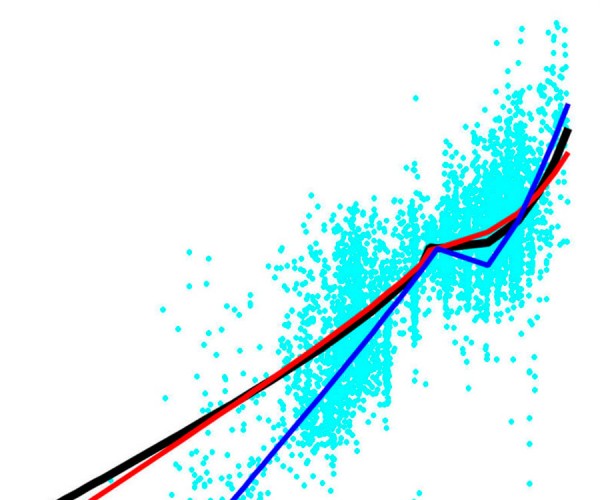
Determination of Local Magnitude for Induced Earthquakes in the Western Canada Sedimentary Basin: An Update
Alireza Babaie Mahani and Honn Kao
With the increased seismicity rate in the Western Canada Sedimentary Basin (WCSB), accurate determination of local magnitude (ML) using data from regional seismograph networks is a vital task for induced seismicity monitoring and mitigation of seismic hazard. Specific mitigation strategies have been put in place by the regulators when the…

Introduction to February Focus: Geophysics in Québec
Jean M. Legault and Oliver Kuhn
In the same way that Quebec is rich in mineral and energy resources, it has a rich and long history in exploration geophysics. For most of us that live and work outside of Quebec, there is a level of mystery with much of the work that goes on there, as…
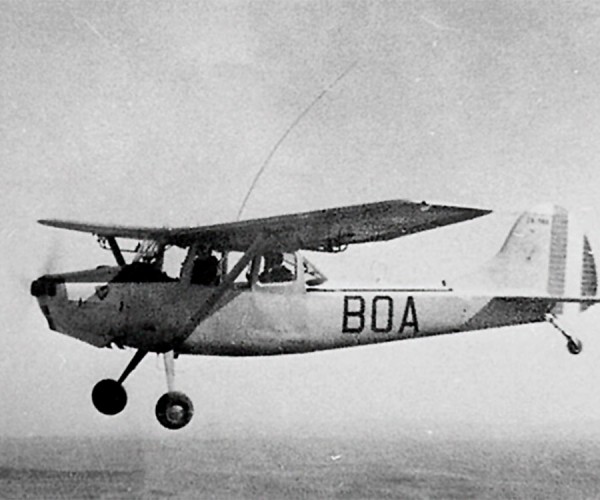
Mining exploration geophysics in Quebec: Over 50 years of innovation
Marc Boivin
The province of Quebec has a long and successful history in mining exploration discoveries, and exploration geophysics has played a significant role since the beginning. nnovative people and their ideas over all those decades were essential to the contribution of geophysics in Quebec and elsewhere in the world.
...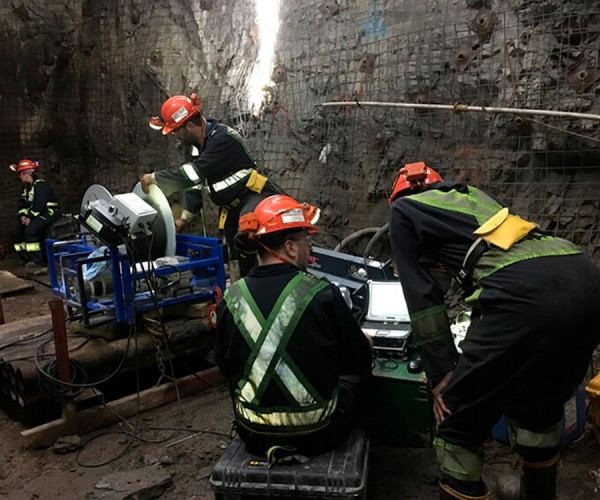
Applied geophysics in a very deep mine context: Example of the >3 km deep, LaRonde Penna mine, Abitibi Greenstone Belt, Quebec
L. Cheng, X. Dai, MC Diallo, C. Liu, N. Foudil-Bey, J. Collins, P. Bérubé, R. Dubuc, D. Fortin, M. Legault, P. Mercier-Langevin, B. Abbassi
...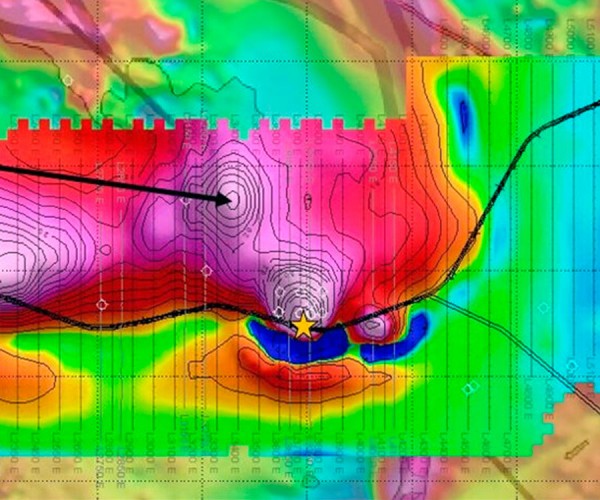
Exploring for Magmatic Ni-Cu-PGE Ore Bodies with Magnetics, Electromagnetics and Reflection Seismic in a Challenging Geological Setting in Nunavik, QC
Circé Malo-Lalande, Maxim Boisvert, Erick Adam and Christopher Grondin
Hunting for Ni-Cu-PGE ore bodies is no easy task, especially in the harsh conditions at the Nunavik Nickel Project in Nunavik, northern Quebec. As the near-surface deposits are found, better tools and sound geological understanding are needed to find deeper deposits.
...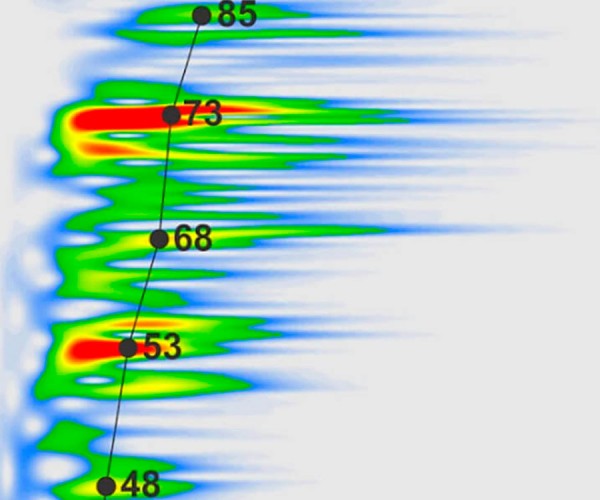
A processing strategy for high-resolution seismic imaging of thin unconventional reservoirs: application to the Macasty Formation, Anticosti Island, Canada
Mathieu J. Duchesne, Zhuoheng Chen, Denis Lavoie, Nicolas Pinet and Virginia I. Brake
...
Science and Scientists, Fiction Writing and Star Trek
Lee Hunt
Writing an engaging novel is challenging. Being a good scientist is also difficult because good science requires almost inhuman discipline and humility.
...
Introduction to October/December Focus: Geophysics in British Columbia and the North
Steve Jensen and Elizabeth Atkinson
...
Seismic and Surface Deformation: Insights from Qualitative Comparisons over a SAGD Reservoir in Alberta
Dennis Ellison
Interferometric Synthetic Aperture Radar (InSAR) is becoming a more desirable method to monitor surface deformation, in particular, ground heave in the oilsands related to thermal SAGD operations. Devon had licensed data from TRE-Altamira using the RADARSAT-2 satellite, which collects roughly 9 usable images each year to calculate deformation. Surface deformation…

Automating seismic data analysis and interpretation
Sergey Fomel
...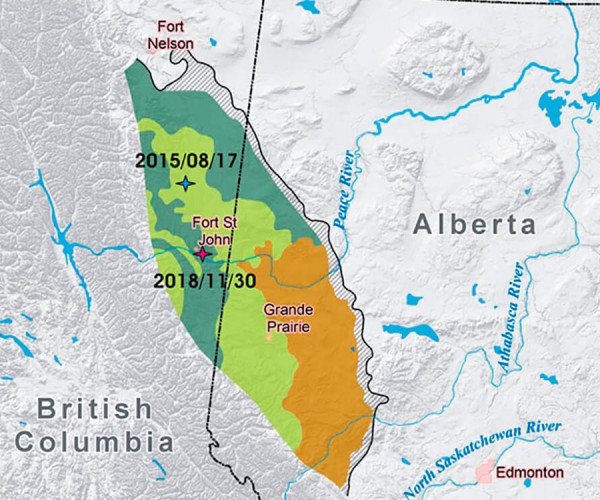
Aftershock Decay Rate of Large Injection-Induced Earthquakes in Northeast British Columbia: A Case Study for Two sequences in the Montney Play
Amir Mansour Farahbod and Honn Kao
We investigated the aftershock decay rate of the two largest injection-induced earthquakes (IIEs) ever recorded in northeast British Columbia that occurred on August 17, 2015 (MW (moment magnitude) 4.6, ML (local magnitude) 4.9) and November 30, 2018 (MW 4.5, ML 4.7). These earthquakes are temporally and spatially correlated with hydraulic…
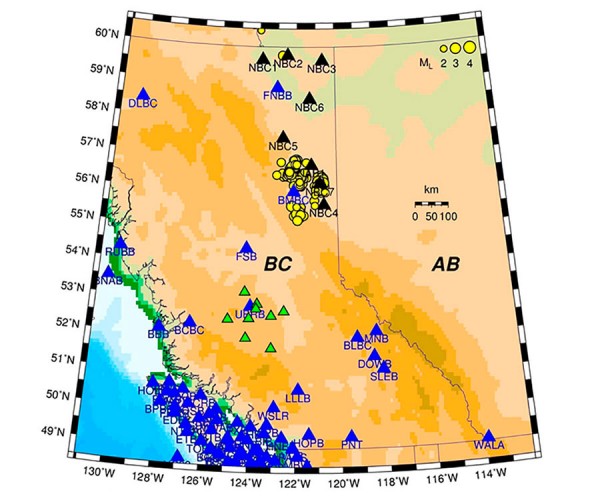
Seismic Attenuation in Northeast British Columbia Using the Coda Q Method
Amir Mansour Farahbod, John F. Cassidy, Honn Kao
Coda-wave attenuation is an important criterion for the study of elastic properties of the lithosphere. In this article, attenuation is measured in northeast British Columbia using records from 9 new stations of the Canadian National Seismic Network (CNSN). Our dataset is comprised of 402 earthquakes recorded between August 2013 and…
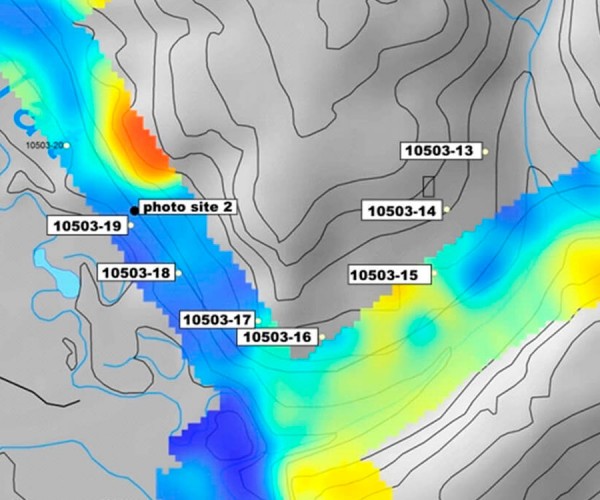
Mapping the Distribution of Permafrost using the Resolve Airborne EM System: Klondike Highway, Yukon, Canada
Mel Best, Isaac Fage and Shawn Ryan
Changes in permafrost distribution in northern regions of North America are related to hydrogeological processes, climate, and ecosystems. In particular, increased thawing due to warmer temperatures alters the permafrost distribution. This can lead to enhancement of surface-groundwater interactions that contribute to surface flow which leads to differential melting of the…
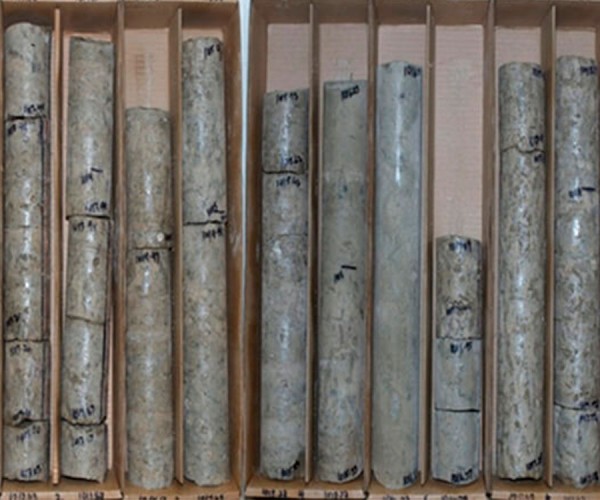
Mapping How Geophysics Is Used To Understand Geohazards In Potash Mines
Craig Funk, James Isbister, Todd Leblanc, Randy Brehm
The Saskatchewan potash industry is over 60 years old now and has survived and been profitable thanks in part to geophysics. The potash deposits in Saskatchewan are globally unique, in that they are very large, flat and relatively unaltered, which permits productive low-cost mining. However, water inflows are a serious…
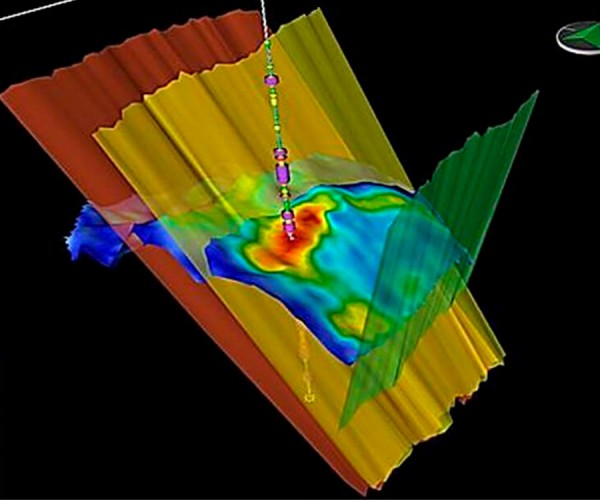
Squeezing more from seismic data: Application of prestack simultaneous impedance inversion to a stratigraphic and structurally complex productive field in Argentina
Eduardo Trinchero and Luis Vernengo
The need to revitalize conventional productive old fields led the geology and geophysics groups to consider the implementation of accurate methodologies and analysis for arriving at static geomodels. An example at hand is the Golfo San Jorge Basin in Argentina with the complexity of its productive zones. Careful reprocessing of…

Practical insights and techniques in seismic velocity estimation
John T. Etgen
The estimation of seismic wave speeds plays one of the most important and critical roles in seismic data processing. As we explore more complex and previously unexplorable provinces, as well as demanding ever-higher quality images from seismic reflection data everywhere, accurate velocity models are of paramount importance.
...
Advanced Seismic Inversion for Engineering Applications in Unconventional Reservoirs
Colin Sayers
Because of their low permeability, economic production from unconventional reservoirs requires increasing the surface area in contact with the reservoir via hydraulic fracturing. Important to the design of efficient hydraulic fractures is an understanding of pore pressure, the orientation and magnitude of principal stresses, the geomechanical properties of the rock,…

Introduction to September Focus: Prairie Provinces
Draga Talinga and Germán Rodríguez Pradilla
Nothing has contributed more to the accelerated advancement of Canada over the past several decades, than the exploration and mining of primary resources. And beneath the rich soil of the Prairies Provinces lie some of the greatest natural resources of our country - vast mineral deposits and oil and gas…
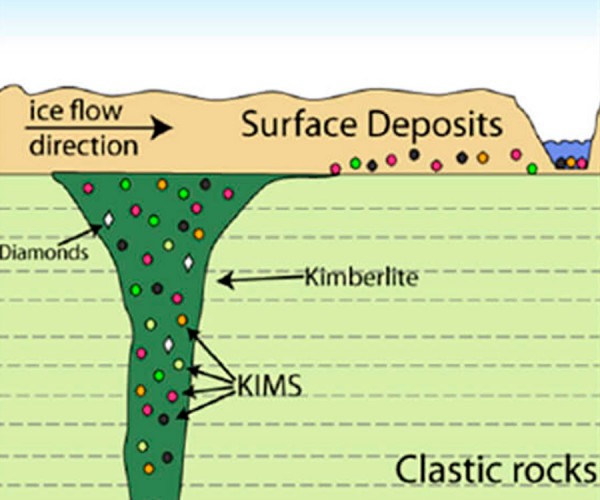
Geoscience Across Canada – Resource Exploration in the Prairie Provinces
Brad Hayes
The exploration history of the discovery of two deposits beneath the Phanerozoic cover of the Flin Flon – Snow Lake volcanogenic massive sulphide (VMS) Belt in Manitoba and Saskatchewan is presented. Due to a lack of outcrops of the host rocks, geophysical exploration techniques were key to the discoveries. Both…
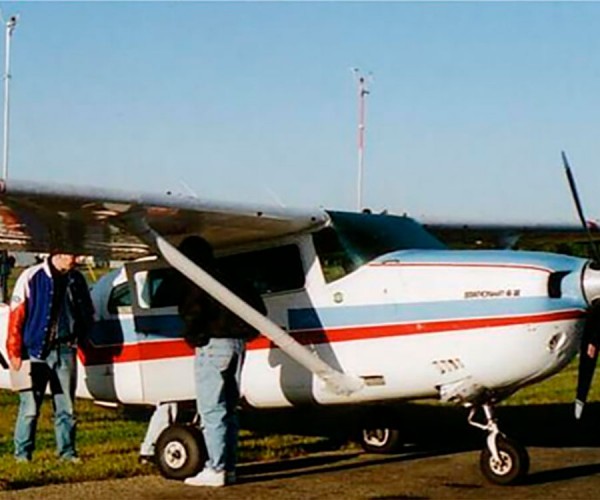
Methods of fault detection with geophysical data and surface geology
Brian Wm Schulte PG, Dane Bridge, Henry Lyatsky
Horizontal wells and fracking are commonly used to increase hydrocarbon production while at the same time lowering the costs. This practice is helped by pad drilling, where multiple lateral horizontal wells can be drilled from a single location, reducing land use and cutting the need to move the rig.
...








